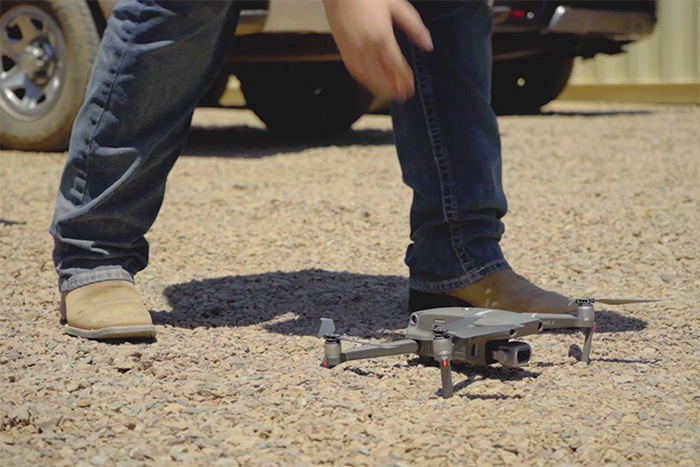About four years ago, Jon Ferguson, director of visualization at Layton Construction, needed aerial pictures of the University of Utah’s Farmington Campus for pursuit purposes. He couldn’t find quality aerial photos on Google Earth, so he found an alternative. He borrowed a drone, the DJI Phantom 1, from a contractor friend. This new technology allowed Ferguson to get the photos and video he needed, and it impressed the crew working on the project.
Back then, drones were new and exciting, and the crew at the Farmington Campus asked Ferguson to come back and take more aerial shots. From there, word spread within Layton about the benefit of drone photography and videography, and drones became an integral part of daily operations. For starters, drones have helped Layton personnel keep jobsites safer and cleaner. With the ability to scan the jobsite each day, they can identify unclean areas and any safety concerns. In addition, drones help with client relations by providing daily photos and video updates and allowing Layton to be more communicative and transparent with operations.
MANUAL OR AUTOMATIC?
When the drone program first began, Ferguson and Austin Lay, Layton’s drone operations coordinator, would map their routes, pictures, and videos and then fly the drones themselves. However, learning to fly a drone smoothly and correctly has a significant learning curve. It required extensive man-hours and Ferguson and Lay flying all over the country to be physically present at the jobsites.
Ferguson and Lay wanted to find an easier and faster way to gather drone footage, and they eventually discovered the software company DroneDeploy. Using the DroneDeploy app, drone pilots can see the aerial image and space they want to shoot, and they can easily create a flight plan by drawing the route, setting the altitude, and setting points on the route for pictures and/or videos. From there, the process, including taking off and landing, is completely automated.

This is exactly what Layton’s drone operations needed to become more efficient and stable. Ferguson and Lay could now preprogram everything and outsource the actual drone operations to a Layton pilot. Ferguson says, “DroneDeploy gave us confidence to just ship a drone to somebody because we knew the chance of them crashing it or us getting bad photos was smaller at that point, and we didn’t have to fly around the country doing it.”
THE SKY’S THE LIMIT
Layton now has used drones on roughly 160 projects and counting. They have upgraded from the borrowed Phantom 1 drone to a couple of Phantom 4s and a Skydio, but most of their drones are the DJI Mavic 2. According to Lay, they are the most reliable for what they need. When Ferguson first borrowed that Phantom 1 drone for the Farmington Campus, he never could have imagined how ubiquitous and important they would become to Layton’s everyday future. Now the team can’t imagine projects without them.
“I don’t know what I’d do without drones right now,” says Patrick Taylor, Layton superintendent. “To use that documentation is vital.”